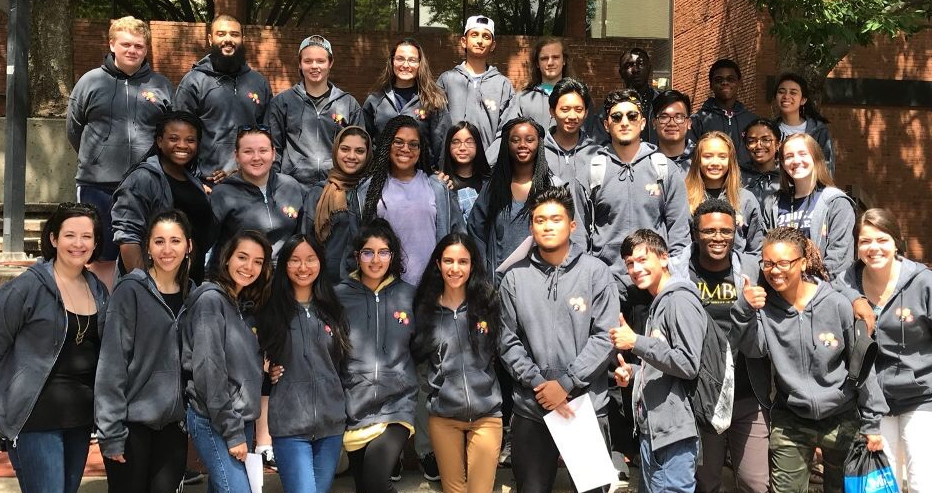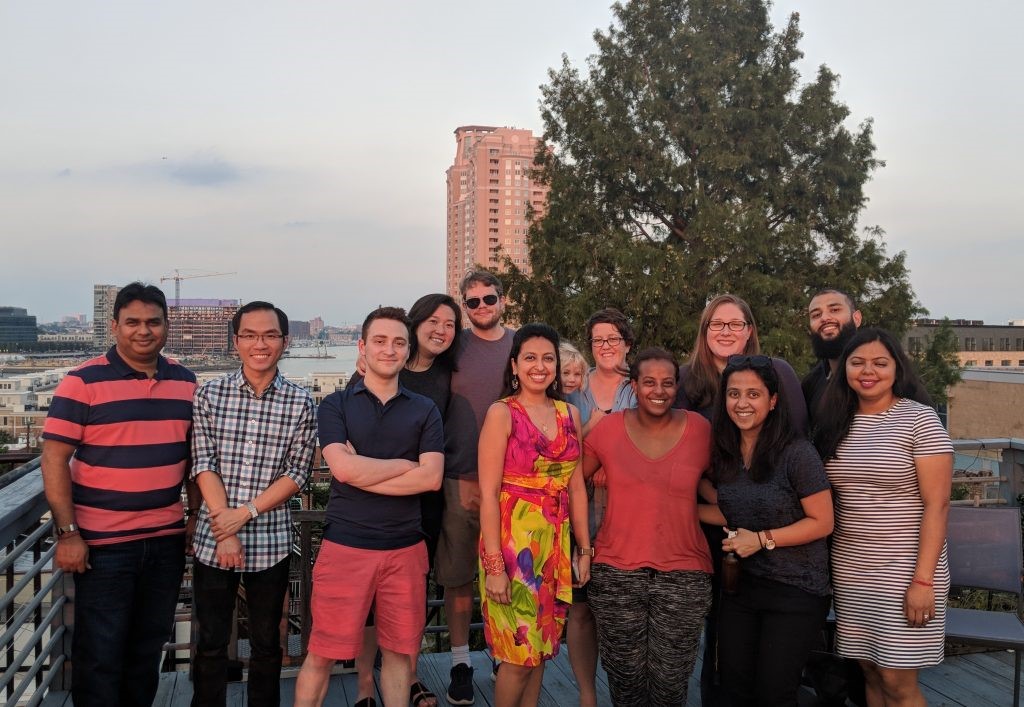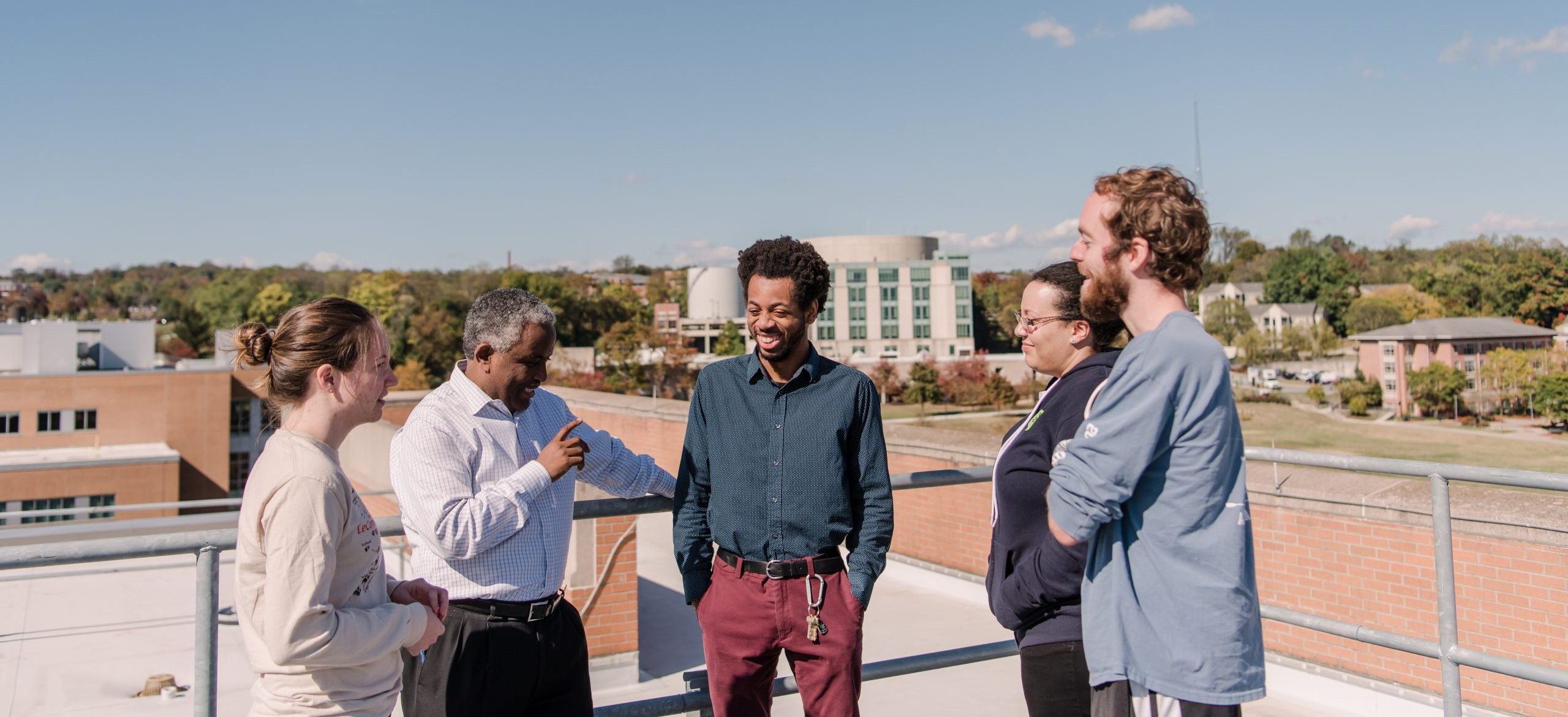In 2015, Cherie Tebah’s dream of providing dental care in marginalized communities was shattered when she sustained injuries while in the U.S. military. Tebah, who is originally from Ghana, had nurtured her dream for years as a dental assistant stationed in Japan. But with the guidance of her medical team, she had to accept that her disability would make achieving that dream impossible.
Tebah had just completed an associates degree at Montgomery College, and at first, she struggled to move on. But after three years of deep reflection, working with a psychologist and social worker, and starting her own business, Tebah found a new path.
The support she received from her own social worker, and shadowing a social worker who had graduated from UMBC, helped her decide to apply to UMBC’s social work program at The Universities at Shady Grove (USG). Visiting campus and finding a tight-knit, diverse community so close to home sealed the deal.
This spring, Tebah will graduate from UMBC with a double major in social work and psychology. Now, she has big plans to channel her passion for serving others into a social work career.
Resources for success
Going back to school wasn’t easy. “As a student with a disability, I had trouble getting my tasks done on time. There were days when it was really hard for me to even walk,” Tebah says. “But my professors worked with me, empowered me, and supported me through everything.” Even when she struggled, “they were there to encourage me to carry on.”
The support Tebah received from her faculty mentors and other resources on campus helped her persist through challenges. The Macklin Center for Academic Success helped her improve her writing. Librarians helped her find sources for assignments. Retriever Essentials provided food when times were especially tough. Counseling services supported her mental health. Zumba classes helped her blow off steam.
The Veteran’s Lounge was most important. “When it was too much for me to handle, I would go to the Veteran’s Lounge,” she says. “There I would connect with other veterans and learn about other resources they had used.”
“At UMBC,” Tebah says, “I’ve gained confidence and learned appropriate ways to advocate for myself.”
Spreading the love
Once she became familiar with campus resources and realized how much they had helped her, Tebah decided to pay it forward. “I love to help people succeed, so for me, if others have put time into my career and my future, I feel that it’s only right to reciprocate that love to other students,” she says.
Tebah joined the Peer Advisory Team, which staffs orientation and conducts monthly check-ins with students. She also became a leader in the Social Work Student Association. “Connecting students with resources that can help them has been very fulfilling for me,” she says.

In August, Tebah will begin her master’s degree in social work at University of Maryland, Baltimore. She’s asked Nicole Belfiore, a clinical instructor in social work at USG, to continue serving as her mentor. “At USG we’re like a family,” Tebah says. And family members stick with each other.
Chasing his potential
Brian Carroll ‘14, physics, Ph.D. ’20, atmospheric physics, has also already begun to pay forward the mentorship he received while pursuing both of his UMBC degrees.
As an undergrad, he joined the Atmospheric Lidar Group, led by Ruben Delgado and Belay Demoz. He then chose to continue in the group for his Ph.D. Both Delgado, assistant research scientist in the Joint Center for Earth Systems Technology (JCET), and Demoz, JCET director, have been key mentors and role models for Carroll.
“Ruben does a great job of pushing you to chase your own potential and offering you opportunities to excel,” Carroll says. “And Belay is especially good at giving professional advice…he offers a lot of what you can’t get in a classroom.”
From them, and others, he’s learned how to support younger students in his field.
Finding the edge
Throughout Carroll’s Ph.D., he’s had many opportunities to mentor undergraduates, and his approach has shifted over the years. He’s learned that rather than explaining everything in detail up front, the best mentors “get someone to the edge of their understanding, and then let them wander for a bit,” he says.

If they get stuck in the dark, “then you kind of light up the area around them. They keep wandering until they get to the edge of the light again, and then push beyond it until they need some more help.”
This summer Carroll will begin a postdoctoral fellowship at NASA Langley in Hampton, Virginia. As he continues his career, “I want to carry on a lot of what Ruben and Belay have taught me and to try to provide that push and help people realize their potential,” Carroll says.
It’s especially important to him to support students from underrepresented backgrounds in atmospheric science, as Delgado and Demoz have modeled so well. “I really want to reach out to as many students as possible,” Carroll says, “especially…from populations that may not have as many opportunities, and help make their success a reality.”
New beginnings
STEM BUILD at UMBC is a program designed to do just that. The College of Natural and Mathematical Sciences (CNMS) runs the multi-pronged, NIH-funded program, which is designed to enhance diversity in the biomedical workforce. In 2018, as a non-traditional student at Montgomery College, Shehar Yar Awan ’20, biological sciences, became a BUILD a Bridge to STEM intern. Little did he know how much the experience would affect his future.

As an intern, Awan conducted research with Erin Green, assistant professor of biological sciences, and presented his work at UMBC’s Summer Undergraduate Research Fest. Because he had such a positive summer experience, Awan decided to transfer to UMBC and apply to be a STEM BUILD Trainee, another arm of the BUILD program. He was accepted.
Spot-on advice
Awan started his STEM BUILD experience as a Retriever with a summer bridge program designed to kick-start his time at UMBC. He shares that program leaders like Lucie Blauvelt, assistant director of student engagement initiatives in CNMS, and Laura Ott, director of the CNMS Science Education Research Unit, made an impact right away.
“It was really great to have someone showing you around campus, introducing you to people, and giving you insight on what it was going to be like and what you needed to do to be successful—and their advice was spot on,” Awan says.

“Lucie always gave us the confidence to succeed. She always said if we were ever in trouble, we could reach out to her for help.”
In his first semester at UMBC, Awan was taking a challenging course load and started to flounder. Blauvelt kept her promise and helped him connect with a physics tutor, while also offering emotional support. By the end of the semester, Awan “blew physics out of the water.”
Caitlin Kowalewski, assistant director for undergraduate initiatives, also influenced Awan’s experience. In his first full semester at UMBC, he participated in the Undergraduate Research Symposium in Chemical and Biological Sciences. “I won first place because of the way that Ms. K. mentored us on our presentations and our posters,” Awan says.
Honored to give back
In his second semester at UMBC, Awan resumed research with Green. The following summer, he served as a mentor to three new BUILD a Bridge to STEM interns in Green’s lab. The trio of interns he supported worked on some of the same techniques he initially struggled with, such as molecular cloning.
“It feels great to be able to give back. Research was something I was completely new to, and it really gave me an appreciation for science that I never had before,” he says. “And now, being able to give that back to other people and show them what it’s all about… It’s amazing and it’s an honor.”

In addition to supporting the interns, as an older student, many of Awan’s fellow BUILD trainees look to him for guidance. “I try to help everyone as much as I can,” he says.
Awan credits STEM BUILD with reshaping his path forward, a sentiment he also shared with the news outlet Open Campus. He now plans to pursue dental school. He also hopes to continue doing research.
“I never knew that I wanted to do research. It’s something that developed in me over my entire undergraduate career at UMBC,” he says. “STEM BUILD helped me discover this part of myself that I never knew about. I’ll never forget the gratitude I have for people in the program that have opened my eyes along the way. It’s been wonderful.”
Banner image: Brian Carroll (far right) with Belay Demoz (second from left) and other members of the Atmospheric Lidar Group on the rooftop of the UMBC Physics Building.
All photos by Marlayna Demond ’11 for UMBC unless otherwise noted.
Tags: Biology, CAHSS, CNMS, Physics, Psychology, SocialWork

